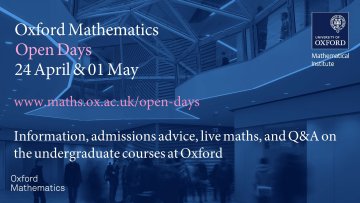Vortex Singularities in Ginzburg-Landau Type Problems - Lecture 1 of 3
3 x 2 hour Lectures via Zoom (see email on 10th May 2021 for details)
Aimed at: The course is addressed to postgraduate students, postdocs and other members of the Mathematical Institute. It is an introduction to concentration phenomenon around vortices in Ginzburg-Landau type problems. The aim is to present topological methods (based on Jacobian, winding number...) that allow for detection of vortices and computation of the interaction energy between them. The purpose of this course is to analyse vortex singularities appearing in Ginzburg-Landau type problems.
The lecture will be via Zoom and the link has also been emailed out separately on 10th May.
Abstract
Abstract, lecture notes and the manuscript for Lecture 1
References
[1] F. Bethuel, H. Brezis, F. Helein, Ginzburg-Landau vortices, Birkhauser, Boston, 1994.
[2] H. Brezis, L. Nirenberg, Degree theory and BMO. I. Compact manifolds without boundaries,
Selecta Math. (N.S.) 1 (1995), 197{263.
[3] R. Ignat, R.L. Jerrard, Renormalized energy between vortices in some Ginzburg-Landau models
on 2-dimensional Riemannian manifolds, Arch. Ration. Mech. Anal. 239 (2021), 1577{1666.
[4] R. Ignat, L. Nguyen, V. Slastikov, A. Zarnescu, On the uniqueness of minimisers of Ginzburg-
Landau functionals, Ann. Sci. Ec. Norm. Super. 53 (2020), 589{613.
[5] R.L. Jerrard, Lower bounds for generalized Ginzburg-Landau functionals, SIAM J. Math. Anal.
30 (1999), 721-746.
[6] R.L. Jerrard, H.M. Soner, The Jacobian and the Ginzburg-Landau energy, Calc. Var. PDE 14
(2002), 151-191.
[7] E. Sandier, Lower bounds for the energy of unit vector elds and applications J. Funct. Anal.
152 (1998), 379-403.
[8] E. Sandier, S. Serfaty, Vortices in the magnetic Ginzburg-Landau model, Birkhauser, 2007.


